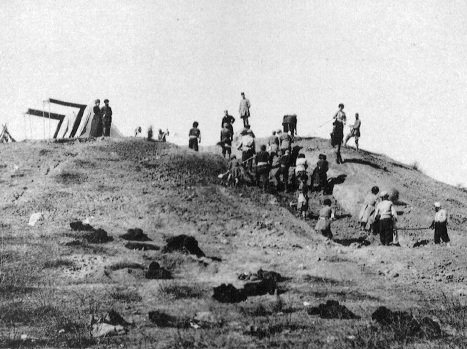
- Home
- The life of Jacques de Morgan
- Persia (1889-1912)
- Mission in Persia (1889-1891)
After he was refused permission to excavate in areas under Russian and Ottoman control, Jacques de Morgan continued his archaeological research in a northwest region of Persia, present-day Iran.
Mapping mission
Morgan’s exploration of northwest Persia was made possible by two encounters. The first took place in Tehran, where Morgan was commissioned by Emin es-Sultan, the Grand Vizier, to map the region along the border between Russia and Persia. Then Morgan met the Crown Prince, who several years later became Mozaffaredin Shah, and who was keen to use his skills as a topographer to map the Iranian Kurdistan region south of Lake Urmia.
The map drawn by Jacques de Morgan at the request of the future Mozaffaredin Shah
Archaeological excavations
As a result of his new responsibilities, Morgan could now travel wherever he wished, study the Achaemenid monuments that came to his attention, and even excavate Iron Age tombs. He also made epigraphic records, including one of the Kaleshin stela, which carries a bilingual inspiration.
View of the archaeological excavations led by Morgan.
The Kaleshin stela.
Broad-based approach
During his travels, Morgan did not limit himself to archaeology. He gathered geological, botanical and paleontological data, recorded his ethnographic observations, and compiled linguistic notes. His aim was to build up a broad and varied body of information on the region.
Recognition and rewards
On his return, the quality of his work was not lost on his contemporaries. In 1892 he was awarded the Léon Dewez Prize gold medal by the Société de Géographie. The results of his research also earned him praise in Persia, where the Shah, on receiving his maps, made Morgan a Grand Officer of the ”The Imperial Order of the Lion and the Sun”, an honorary distinction in recognition of his services to Persia.





